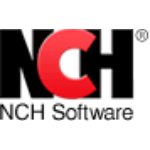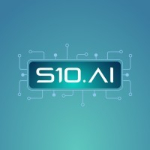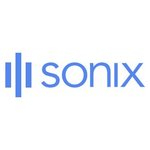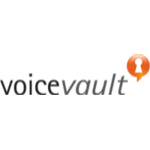TechnologyCounter provides genuine, unbiased real user reviews to help buyers make informed decisions. We may earn a referral fee when you purchase through our links, at no extra cost to you.
List of Best Voice Recognition Software
Showing 1 - 15 of 15 productsCallRail is a call tracking and analytics software designed to help businesses measure the success of their marketing efforts and optimize their campaigns. With advanced features tools, CallRail is a solution for businesses looking to gain valuable i...Read CallRail Reviews
OpenPhone is a communication software that brings a seamless is a experience to businesses and individuals alike. With its intuitive and user-friendly interface, OpenPhone aims to streamline your phone calls, messages, voicemails, and more, all in on...Read OpenPhone Reviews
Otter.ai is a transcription and note-taking software that enhances productivity and efficiency for individuals and teams alike. With its advanced speech recognition technology, Otter.ai allows you to effortlessly transcribe and organize your audio re...Read Otter.ai Reviews
Dialectics is a and innovative software that aims to revolutionize the way we think about problem-solving and decision-making. With its dynamic approach, this software encourages critical thinking by analyzing opposing arguments and finding the commo...Read Dialics Reviews
LilySpeech is a speech recognition software designed to lighten the load of your daily tasks. With LilySpeech, typing emails, documents, and messages will become a breeze as it accurately translates your speech into text. Say goodbye to typing and he...Read LilySpeech Reviews
Express Scribe is a transcription software that is designed to simplify the process of converting audio recordings to written documents. With its user-friendly interface features, Express Scribe makes transcription a seamless is a task for profession...Read Express Scribe Reviews
Trint is a transcription software that simplifies the process of converting audio and video files into text. With its advanced technology, Trint makes transcription faster and more accurate, allowing users to easily transcribe interviews, lectures, a...Read Trint Reviews
Naturaltts the ultimate text-to-speech software designed to elevate your audio experience. With its advanced technology interface, Naturaltts takes text-to-speech to a whole new level, making it easier and more natural than ever before. Say goodbye t...Read Naturaltts Reviews
S10.AI is revolutionizing the world of artificial intelligence with its innovative and dynamic approach. This powerful software is designed to enhance businesses of all sizes, delivering unparalleled efficiency and accuracy. With S10.AI, prepare to u...Read S10.AI Reviews
Braina is a software that will transform the way you interact with your technology. With its advanced features, Braina offers a seamless experience to enhance your productivity and make your daily tasks a breeze. Say goodbye to traditional methods an...Read Braina Reviews
Augnito is the innovative software designed to revolutionize your audio-to-text transcription process. With its advanced technology and user-friendly interface, Augnito provides accurate is a transcriptions for a seamless experience. Say goodbye to c...Read Augnito Reviews
VoiceboxMD is revolutionizing the way medical professionals handle their documentation. With its state-of-the-art technology and user-friendly interface, VoiceboxMD simplifies the process of transcribing patient encounters, making it quicker and more...Read VoiceboxMD Reviews
Verbio ASR is an advanced speech recognition software that allows for accurate is a transcription of spoken words. With its user-friendly interface algorithms, it has become the top choice for businesses and individuals seeking natural and seamless v...Read Verbio ASR Reviews
Sonix is a transcription and translation software that is changing the game for businesses and individuals alike. With its advanced technology and user-friendly interface, Sonix makes the process of converting audio and video files into text document...Read Sonix Reviews
Verint Speech Analytics is a software that analyzes and interprets spoken words to provide valuable insights into customer interactions. With its advanced technology and user-friendly interface, Verint Speech Analytics revolutionizes the way business...Read Verint Speech Analytics Reviews
- What Is Voice Recognition Software?
- Top Reasons Why Businesses Need Voice Recognition Software?
- What Are the Top Key Features of Voice Recognition Software?
- What Are the Top Benefits of Voice Recognition Software?
- What Are the Steps to Choose the Right Voice Recognition Software?
- What Are the Types of Voice Recognition Software for Different Industries?
- What Are the Technology Trends for Best Voice Recognition Software?
- What Are the Deployment Options for Voice Recognition Software?
What Is Voice Recognition Software?
Voice recognition software refers to a form of computer technology that enables users to engage with their computer or device solely through spoken commands. The device possesses the capability to manipulate a computer system and its associated software, traverse many menus, travel through digital content, and execute intricate operations.
The software operates by actively listening to and conducting an analysis of the user's spoken input. It subsequently translates the speech into a designated command, which is then executed to accomplish the intended task.
Typically, voice recognition software incorporates a speech-to-text functionality, enabling users to input words or commands by means of vocalization. Furthermore, this technology has the capability to activate specific programs or websites in response to verbal commands provided by the user.
The utilization of the best voice recognition software can provide users with enhanced accessibility since it enables them to engage with their electronic devices without the necessity of manual typing or mouse manipulation.
Moreover, this technology has the capability to automatically transcribe oral audio, so facilitating the generation of textual transcripts for interviews and other recorded dialogues. To utilize the technology, the user must establish an account and designate their preferred language.
Subsequently, the software will necessitate the user to engage in training the program in order to familiarize it with their distinctive manner of speech. The completion of this training often requires only a few minutes and is important for the program to accurately comprehend the commands or requests made by the user.
Top Reasons Why Businesses Need Voice Recognition Software?
1. Voice recognition software has the potential to mitigate errors that can result in significant ramifications, such as data entry errors within commercial enterprises.
2. Automation has the potential to streamline and expedite repetitive and laborious tasks, such as typing, organizing documents, and inputting data.
3. The implementation of this technology has the potential to mitigate labor expenses by minimizing the reliance on manual labor.
4. One benefit of a voice recognition phone system is its ability to ensure accurate comprehension and prompt execution of instructions.
5. One potential benefit is the potential to enhance overall customer happiness, as it eliminates the need for customers to endure extended waiting periods.
6. The use of this measure has the potential to enhance employee productivity and efficiency.
7. One potential benefit is the potential reduction in labor costs that can be achieved through the utilization of telephone service.
8. The instrument has the capability to serve as a means of communication for swift connection with customers.
9. The utilization of this tool can serve as a kind of training for newly hired personnel, aiding in their understanding and acclimation to the various operations within the organization.
10. The provision of personalized customer assistance is possible.
11. The voice recognition software has the capability to deliver precise documentation and evaluation of customer engagements.
12. The integration of a payment information input mechanism can facilitate the acceleration of transactions by eliminating the need for clients to manually enter their payment details.
13. One potential benefit is the potential reduction of delay in customer interactions.
14. The utilization of this tool has the potential to optimize customer service processes, hence contributing to a decrease in customer complaints.
15. The use of voice recognition phone systems can assist organizations in adhering to industry-specific requirements.
What Are the Top Key Features of Voice Recognition Software?
1. Speech Recognition: Speech recognition refers to the software's capacity to effectively and precisely identify human speech and transform it into written or digital format.
2. Voice-Driven Commands: Voice command technology refers to the capacity to utilize spoken instructions for the purpose of operating a computer or other electronic device.
3. Natural Language Processing: Natural language command comprehension and interpretation refer to the cognitive capacity to comprehend and interpret commands expressed in human language.
4. Automatic Speech Recognition: Automatic speech recognition (ASR) refers to the capacity to identify uttered words without requiring any manual transcription.
5. Text to Speech: Speech synthesis refers to the capacity to synthesize spoken language mechanically based on written material.
6. Voice Biometric Verification: Voice biometrics refers to the capacity to execute authentication and verification procedures by utilizing voice patterns, hence enabling systems to accurately identify and authenticate individuals.
7. Customizable Vocabulary: Vocabulary customization refers to the capacity to tailor the lexicon of a voice recognition system in order to optimize its suitability for a certain application.
8. Context Awareness: The capacity to discern the contextual cues of a speaker with the aim of formulating a response that is deemed most suitable.
9. Accurate Speech Recognition: The capacity to effectively identify and comprehend spoken language, even in acoustically challenging conditions or in the presence of linguistic barriers.
10. Speech Analytics: The capability to examine recorded speech and get valuable information from it is referred to as speech analysis.
What Are the Top Benefits of Voice Recognition Software?
1. Increased Efficiency: The utilization of a voice recognition phone system enables users to expedite the process of generating text by dictating it, as opposed to manually typing out each individual word. This facilitates the expeditious completion of activities and empowers individuals to concurrently concentrate on additional duties.
2. Improved Accuracy: Voice recognition software is a valuable tool in minimizing typographical errors and other mistakes, as it eliminates the need for manual input. This practice aids in the prevention of errors and facilitates the production of more precise documents.
3. Accessibility: Voice recognition software offers an alternative means of input for individuals who experience physical disabilities. Through the utilization of vocal commands, individuals are capable of operating computers and other digital devices without the need for manual typing or mouse manipulation.
4. Enhanced Experience: Best voice recognition software offers an improved user experience in comparison to manual input methods. The implementation of an automated agent to respond to user input facilitates a more seamless and organic engagement for users.
5. Cost Savings: The implementation of top voice recognition software obviates the necessity of acquiring supplementary hardware and has the potential to yield cost savings in the long term.
What Are the Steps to Choose the Right Voice Recognition Software?
1. Determine your needs: When making a decision on which voice recognition software to choose, it is crucial to carefully evaluate and take into account the unique requirements of your organization.
Consider the range of actions that will be executed using the program, alongside its designated purpose, encompassing dictation, transcription, customer service, and similar applications.
2. Research available programs: After developing a comprehensive understanding of the requirements, it is advisable to conduct thorough research on the various programs that are currently accessible. It is important to conduct a comprehensive comparison of the features and benefits, cost, customer ratings, and support provided for each option.
3. Check system requirements: Specific software applications may include distinct system prerequisites that must be met in order to ensure optimal functionality.
It is imperative to ensure that the program selected is compatible with the computer system in use, while also verifying that there is sufficient Random Access Memory (RAM) and disk space available to allow its installation.
4. Measure accuracy: Examine customer reviews and testimonials as a means of assessing the veracity of the program under consideration.
It is imperative to ensure that the chosen software possesses the capability to accurately identify and distinguish the voices of all individuals who will be utilizing it, while also demonstrating proficiency in accurately comprehending and interpreting words in the desired language.
5. Test the software: Ideally, it is advisable to conduct software testing prior to completing a purchase. Utilize a complimentary trial period to ascertain the program's compatibility with your specific requirements.
6. Compare pricing and support: After the final pick has been made, it is advisable to conduct a comparative analysis of the pricing and levels of assistance provided by various providers. This approach will aid in securing the most advantageous agreement while maintaining a high level of customer service.
What Are the Types of Voice Recognition Software for Different Industries?
There exists a wide range of best voice recognition software variants, each tailored to certain industries in which they are employed. In the healthcare sector, there exist speech recognition systems specifically developed for medical transcription purposes, enabling precise transcription of medical information from dictation.
Voice recognition systems have been developed specifically for the automotive industry to provide hands-free operation of various car equipment, including navigation systems, entertainment systems, and controls for air conditioning and heating.
Voice recognition software is commonly employed in office environments to facilitate dictation, hence enabling the conversion of spoken language into digital text documents. Voice recognition technologies specifically developed for language acquisition are available for educational institutions.
These systems have the potential to enhance students' pronunciation and auditory word identification skills, while also assisting teachers in delivering personalized feedback to each student. Voice recognition systems are utilized in the retail industry to enhance the efficiency of consumer checkout processes.
These systems offer automated ordering alternatives, enabling customers to confirm their orders and make payments in a more streamlined manner. Voice recognition technology is employed in both commercial and domestic security systems, enabling customers to exercise control over their security systems through the use of spoken instructions.
Medical voice dictation software is utilized within the legal domain for the purpose of creating electronic court records. Finally, voice recognition systems find application in military contexts, particularly in the management of unmanned aerial vehicles (UAVs) and other automated operations.
In general, the aforementioned are the primary categories of top voice recognition software employed in various sectors.
What Are the Technology Trends for Best Voice Recognition Software?
The prevalence of the best voice recognition software has been steadily growing as a result of its capacity to rapidly and precisely analyze audio inputs.
The current advancements in technology pertaining to speech recognition software mostly revolve around enhancing accuracy, broadening availability, increasing accessibility, and researching potential applications in related fields.
In order to enhance precision, software developers are actively engaged in the process of improving established algorithms and investigating novel models. The most recent models are integrating Natural Language Processing (NLP) in order to enhance their understanding of the audio input.
In order to enhance accessibility, the development of cloud-based services is underway to enable users to utilize voice recognition phone systems on devices that possess limited computational capabilities.
These services also provide enhanced flexibility in utilizing hardware components such as microphones from many sorts of devices. In order to enhance accessibility, the open-source distribution of top voice recognition software has been facilitated, enabling developers to engage in experimentation without the need for costly licensing acquisitions.
Moreover, the accessibility of speech recognition technology is increasingly expanding to encompass a range of devices, including computers, smartphones, and smart speakers.
Developers are now investigating several applications that are closely associated with voice recognition technology, including its potential utilization in medical diagnostics and other duties within the healthcare domain.
Developers are currently investigating the utilization of voice recognition transcription software for the purpose of constructing virtual personal assistants or for the management of household equipment.
What Are the Deployment Options for Voice Recognition Software?
The implementation of the best voice recognition software can be conducted in several environments, including on-premises, cloud-based, or hybrid configurations.
1. On-premises deployment refers to the practice of hosting voice recognition software on dedicated hardware.
The software is installed and regularly maintained on the server owned by the user, and the data is saved locally on the hardware.
2. Cloud deployment refers to the practice of hosting top voice recognition software on a server belonging to a third-party supplier.
This alternative provides consumers with enhanced software accessibility, along with the convenience of software updates without the necessity of acquiring new hardware.
3. Hybrid deployment refers to the concurrent hosting of voice recognition transcription software on both the user's on-premises server and third-party cloud servers.
This deployment option offers users the utmost freedom by allowing them to choose between on-premises and cloud deployments. It is widely considered the most popular choice for speech recognition software.















